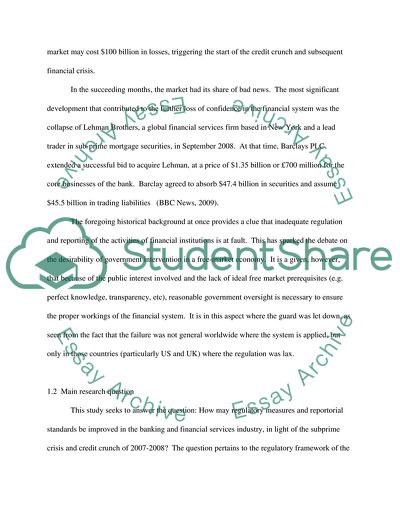Cite this document
(The Regulatory Measures and Reportorial Standards Pertaining to the Research Paper, n.d.)
The Regulatory Measures and Reportorial Standards Pertaining to the Research Paper. Retrieved from https://studentshare.org/macro-microeconomics/1733170-the-regulatory-measures-and-reportorial-standards-pertaining-to-the-banking-and-financial-services-industry-in-light-of-the-subprime-crisis-and-credit-crunch-of-2007-2008
The Regulatory Measures and Reportorial Standards Pertaining to the Research Paper. Retrieved from https://studentshare.org/macro-microeconomics/1733170-the-regulatory-measures-and-reportorial-standards-pertaining-to-the-banking-and-financial-services-industry-in-light-of-the-subprime-crisis-and-credit-crunch-of-2007-2008
(The Regulatory Measures and Reportorial Standards Pertaining to the Research Paper)
The Regulatory Measures and Reportorial Standards Pertaining to the Research Paper. https://studentshare.org/macro-microeconomics/1733170-the-regulatory-measures-and-reportorial-standards-pertaining-to-the-banking-and-financial-services-industry-in-light-of-the-subprime-crisis-and-credit-crunch-of-2007-2008.
The Regulatory Measures and Reportorial Standards Pertaining to the Research Paper. https://studentshare.org/macro-microeconomics/1733170-the-regulatory-measures-and-reportorial-standards-pertaining-to-the-banking-and-financial-services-industry-in-light-of-the-subprime-crisis-and-credit-crunch-of-2007-2008.
“The Regulatory Measures and Reportorial Standards Pertaining to the Research Paper”, n.d. https://studentshare.org/macro-microeconomics/1733170-the-regulatory-measures-and-reportorial-standards-pertaining-to-the-banking-and-financial-services-industry-in-light-of-the-subprime-crisis-and-credit-crunch-of-2007-2008.


